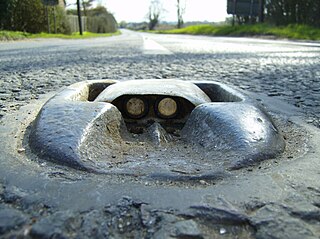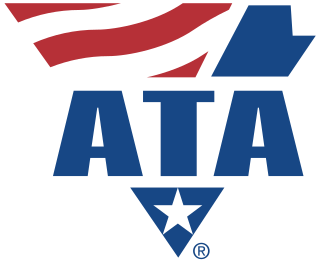See also

| Abbreviation | RSMA |
|---|---|
| Formation | 1976 (as RMMCA) |
| Type | Trade association |
| Legal status | Unincorporated entity |
| Purpose | Trade Association |
| Location |
|
Region served | UK |
Membership | Companies involved in the road marking industry |
Chief Executive | Stu McInroy |
| Website | RSMA |
The Road Safety Markings Association (RSMA) is a trade association for companies involved in the road safety markings industry.
The RSMA was founded in 1976, as the Road Marking Manufacturers and Contractors Association (RMMCA), changing its name to the Road Safety Markings Association in 1992. Initially based in Charlwood, Surrey, it had offices in Bury, Greater Manchester from 1998 to 2006, prior to setting up offices and a national training centre in Gainsborough, Lincolnshire.
As a trade association RSMA represents and promotes the legitimate business interests of the UK road marking sector (it has provided evidence to the House of Commons Transport Select Committee, for example). [1] It also provides specialist services to member organisations, and undertakes research and marketing activities to identify the safety and economic benefits of road markings use - many of which are made from thermoplastics. For example, in 2014, an RSMA survey found that 52% of markings on motorways, 42% on dual carriageways, and 48% on single carriageways, all needed replacing immediately or imminently. [2] [3]
The RSMA publishes specialist trade publications including Top Marks (circulated to over 8000 industry specialists), [4] and member publication (and e-publication) On the Line.
It offers industry training to companies and local authorities via its NHA subsidiary, established in 2007. As part of this, it runs the Specialist Applied-Skills Programme (SAP).
The RSMA has representative committees specialising in health and safety, and technical issues.
RSMA has 83 members throughout the UK and Europe.


A road is a thoroughfare, route, or way on land between two places that has been paved or otherwise improved to allow travel by foot or by some form of conveyance.

Road traffic safety refers to the methods and measures used to prevent road users from being killed or seriously injured. Typical road users include pedestrians, cyclists, motorists, vehicle passengers, horse riders, and passengers of on-road public transport.

Highways in Australia are generally high capacity roads managed by state and territory government agencies, though Australia's federal government contributes funding for important links between capital cities and major regional centres. Prior to European settlement, the earliest needs for trade and travel were met by narrow bush tracks, used by tribes of Indigenous Australians. The formal construction of roads began in 1788, after the founding of the colony of New South Wales, and a network of three major roads across the colony emerged by the 1820s. Similar road networks were established in the other colonies of Australia. Road construction programs in the early 19th century were generally underfunded, as they were dependent on government budgets, loans, and tolls; while there was a huge increase in road usage, due to the Australian gold rushes. Local government authorities, often known as Road Boards, were therefore established to be primarily responsible for funding and undertaking road construction and maintenance. The early 1900s saw both the increasingly widespread use of motorised transportation, and the creation of state road authorities in each state, between 1913 and 1926. These authorities managed each state's road network, with the main arterial roads controlled and maintained by the state, and other roads remaining the responsibility of local governments. The federal government became involved in road funding in the 1920s, distributing funding to the states. The depression of the 1930s slowed the funding and development of the major road network until the onset on World War II. Supply roads leading to the north of the country were considered vital, resulting in the construction of Barkly, Stuart, and Eyre Highways.

A cat's eye or road stud is a retroreflective safety device used in road marking and was the first of a range of raised pavement markers.

The parliamentary committees are sub-legislative organizations each consisting of small number of Members of Parliament from the House of Commons, or peers from the House of Lords, or a mix of both appointed to deal with particular areas or issues; most are made up of members of the Commons. The majority of parliamentary committees are select committees. The remit of these committees vary depending on whether they are committees of the House of Commons or the House of Lords.
Highways England Company Limited is the government-owned company charged with operating, maintaining and improving England's motorways and major A roads. It operates information services through the provision of on-road signage and its Traffic England website, provides traffic officers to deal with incidents on its network, and manages the delivery of improvement schemes to the network.

IAM RoadSmart formerly called the Institute of Advanced Motorists (IAM) is a charity based in the United Kingdom and serving nine countries, whose objective is to improve car driving and motorcycle riding standards, and so enhance road safety, by using the British police's system of car and motorcycle control commonly known as "the System". The System was devised in 1937 by racing driver Mark Everard Pepys, 6th Earl of Cottenham, to reduce accidents in police pursuits.

The Office of Rail and Road (ORR) is a non-ministerial government department responsible for the economic and safety regulation of Britain's railways, and the economic monitoring of Highways England.

A controlled-access highway is a type of highway that has been designed for high-speed vehicular traffic, with all traffic flow—ingress and egress—regulated. Common English terms are freeway, motorway and expressway. Other similar terms include throughway and parkway. Some of these may be limited-access highways, although this term can also refer to a class of highway with somewhat less isolation from other traffic.

Road signs in the United Kingdom and in its associated Crown dependencies and overseas territories conform broadly to European design norms, though a number of signs are unique: direction signs omit European route numbers and road signs generally use the Imperial System of units, unlike the rest of Europe.

TRL Limited, trading as TRL is an independent private company offering a transport consultancy and research service to the public and private sector. Originally established in 1933 by the UK Government as the Road Research Laboratory (RRL), it was privatised in 1996. Its motto or tagline is 'The Future of Transport'.

Road traffic control involves directing vehicular and pedestrian traffic around a construction zone, accident or other road disruption, thus ensuring the safety of emergency response teams, construction workers and the general public.
The Road Haulage Association Ltd (RHA) is a private company limited by guarantee dedicated to the interests of the road haulage industry. It is the only trade association in the United Kingdom dedicated solely to road haulage. As a trade association, the RHA is responsible for campaigning, advice, training, information and business services for its members within the UK haulage industry, including audits, risk assessments and contracts of employment.

The A174 is a major road in North Yorkshire, England. It runs from the A19 road at Thornaby-on-Tees, across South Teesside and down the Yorkshire Coast to Whitby. The A174 is the coastal route between Teesside and Whitby; the alternative road, the A171, is described as being the moorland route.
The Retail Motor Industry Federation (RMI) represents the interests of motor industry operators in England, Wales, Northern Ireland and the Isle of Man providing sales and services to motorists and businesses. It does not represent businesses in Scotland, which are represented by the independent Scottish Motor Trade Association.

The American Trucking Associations (ATA), founded in 1933, is the largest national trade association for the trucking industry. ATA represents more than 37,000 members covering every type of motor carrier in the United States through a federation of other trucking groups, industry-related conferences, and its 50 affiliated state trucking associations. Former Governor of Kansas Bill Graves was replaced by Chris Spear as the ATA's President and CEO in July 2016.

The Building Engineering Services Association (BESA), until 2012 the Heating and Ventilating Contractors' Association, and from then until 2016, B&ES, is the main UK trade association for companies that design, install, commission and maintain heating, ventilation, air conditioning, refrigeration (HVACR) and related engineering projects.

Yellow lines are road markings used in various territories.

The Slough experiment was a two-year road safety trial carried out in Slough, Berkshire, England, from 2 April 1955 to 31 March 1957. Different road safety innovations were tested to determine if they would reduce the number of road accidents. Amongst other innovations the experiment trialled the first linked traffic signals in the country, single yellow no-waiting lines, a keep left system for pedestrians and yield signs at junctions. The experiment also saw the first use of 20 mph and 40 mph speed limits in the UK. The experiment cost at least £133,100 and resulted in a 10% reduction in serious injuries and fatalities.
The United Kingdom employs a number of measures to control parking on public highways.